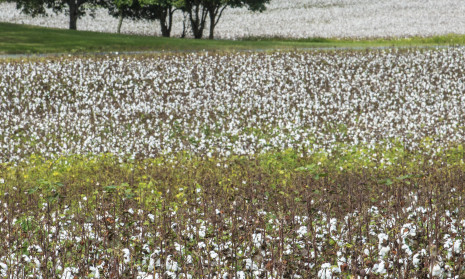Plastic film in agriculture and horticulture: risks and benefits

The article by Professor Changrong Yan (1706) follows one we published in 2014 (1416) which addressed some of the challenges which this technology presents.
Use of plastic film is certainly not new; it was used to establish maize in early trials in Britain in the 1970s and is widely used in Europe today, e.g. for early carrot production on sandy, dry land, for the same reasons as in China – warming of the soil under the film allows earlier and better crop establishment.
This is especially true in dry areas with cold springs such as China’s Loess plateau, where there is also the benefit of moisture retention .
However, it is clear from these papers that plastic contamination causes severe pollution; a disadvantage, cancelling out many potential benefits.
In other areas also, recovery may not be as effective us users would wish and the risk of wind damage, shredding and removing film from the fields is ever present (Figure).
Like any new technology, disadvantages seem to have taken some years to present in the wider environment. However, in the interim, to the individual grower, the benefits of early crop establishment leading to an earlier harvest, often with higher yields are significant.
This is particularly the case where production costs are decreased as the earlier establishment frequently increases crop marketability and thus financial returns.
The early innovator often adopts the technology before disadvantages become apparent. In the process he may derive a number of substantial economic benefits. He is also able to detect and help solve problems early.
In modern society we have tended to become risk averse and adopt the so-called ‘precautionary principle’ when new technologies are developed.
There is often felt to be a need to regulate any new technology on the grounds that it might have adverse impacts, especially on the environment. There is a need to strike a balance between innovation, risk assessment and protection of users, consumers and the environment.
The rapid communications of modern life coupled with the complexities of our society often mean that we can cause undue concern without substantive evidence, even raising the spectre of ‘fake news’, whatever that is.
In practice, this balance is between industry, which is often distrusted by sectors of society and society itself, which has a perceived need to regulate. Industry, through users has responsibility for the safe use of any new technology, in order to avoid possible adverse effects may otherwise develop.
The problems with plastics and especially film used for mulching are worldwide. Annually many thousands of tonnes need to be recovered after use in the USA and Europe alone.
Many of these products are not suitable for reprocessing and go to landfill or incineration in energy generation systems.
The costs of recovery, baling and transport are thus significant. These costs, coupled with the petrochemical costs of manufacture, suggest a life-cycle analysis of the benefits of plastic mulching might provide some interesting conclusions.
The two papers we publish show that industry in China is also responding to the very demonstrable problems associated with widespread use of plastic film.
Use of very thin film is now encouraged and film which degrades to harmless by-products by exposure to UV or even water is being developed. In our modern complex society industry should have a moral duty to prevent damage to people and the environment.
It can be argued it is not the role of government or the public purse to ensure corporate responsibility. Any industry which develops and exploits new technology needs to bear the balance between benefits and disadvantages in mind and monitor adoption to ensure it becomes aware of potential problems.
This will allow solutions to be developed before damage is irreparable, especially as in the modern world the consensus is that ‘the polluter pays’. On the other hand, society must ensure that it does not over-regulate and impair introduction of beneficial technology to disadvantage the producer and consumer.
Download pdf
